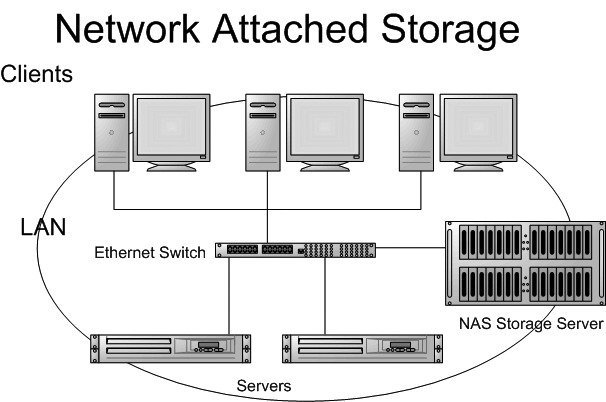A Comprehensive Guide to Open Source Network Attached Storage (NAS) Solutions
Introduction
Network Attached Storage (NAS) has become an essential component for both home and business networks, providing centralized data storage and access over a network. While commercial NAS devices offer robust features, open source NAS solutions present a flexible, cost-effective alternative. This blog post delves into the history, usage, and various open source NAS software options, providing a comprehensive overview for anyone interested in setting up their own NAS system.
History of Network Attached Storage
The concept of Network Attached Storage has evolved significantly over the past few decades. Initially, data storage solutions were directly attached to individual computers, limiting accessibility and scalability. As networks grew and the need for shared storage became apparent, NAS emerged as a solution to centralize storage, making it accessible from any device on the network.
- Early NAS Development: The first NAS devices appeared in the 1980s, primarily used by enterprises to manage large amounts of data. These early systems were expensive and complex, often requiring specialized hardware and software.
- Growth and Standardization: In the 1990s and 2000s, NAS technology matured, becoming more affordable and user-friendly. Standardization of networking protocols, such as SMB (Server Message Block) and NFS (Network File System), facilitated broader adoption.
- Open Source Movement: With the rise of the open source movement, community-driven NAS solutions began to emerge, offering cost-effective and customizable alternatives to proprietary systems.
Usage of NAS
NAS systems serve a variety of purposes, from simple file storage to complex data management and backup solutions. Key usages include:
- File Sharing: NAS allows multiple users to access and share files over a network, facilitating collaboration and centralized data management.
- Media Streaming: Many home users utilize NAS for storing and streaming media content, such as movies, music, and photos, to various devices in their network.
- Backup Solutions: NAS provides a reliable solution for backing up important data from multiple devices, ensuring data integrity and disaster recovery.
- Virtualization: In business environments, NAS is often used to store virtual machine images, supporting virtualization platforms like VMware and Hyper-V.
- Surveillance Storage: NAS devices can be used to store footage from networked security cameras, offering scalable and secure storage for surveillance systems.
Open Source NAS Software
Several open source NAS solutions are available, each with its own set of features and capabilities. Here is a list of some of the most popular open source NAS software options:
- FreeNAS/TrueNAS:
- Overview: FreeNAS, recently rebranded as TrueNAS CORE, is one of the most popular open source NAS solutions. It is based on FreeBSD and uses the ZFS file system for data integrity and advanced storage features.
- Features: Includes data snapshots, replication, encryption, and a web-based management interface. It supports a wide range of plugins and virtual machine hosting.
- Use Cases: Ideal for both home users and enterprises looking for a robust and scalable NAS solution.
- OpenMediaVault:
- Overview: OpenMediaVault (OMV) is a Debian-based NAS solution designed for home and small office environments.
- Features: Provides a simple web-based interface, support for various file systems, RAID management, and extensive plugin support.
- Use Cases: Best suited for users looking for an easy-to-use, yet powerful NAS solution for home or small business use.
- XigmaNAS:
- Overview: Formerly known as NAS4Free, XigmaNAS is a free and open source NAS solution based on FreeBSD.
- Features: Offers support for ZFS, UFS, and other file systems, along with a web-based interface, advanced network services, and virtualization support.
- Use Cases: Suitable for users needing a versatile and reliable NAS system with comprehensive network services.
- Rockstor:
- Overview: Rockstor is a Linux-based NAS solution that uses the Btrfs file system for advanced storage capabilities.
- Features: Includes a web-based interface, snapshot management, replication, and a robust plugin system.
- Use Cases: Ideal for users who prefer a Linux-based solution with the advanced features of Btrfs.
- Amahi:
- Overview: Amahi is a home server solution that can also function as a NAS. It is based on Fedora and focuses on ease of use.
- Features: Provides file sharing, media streaming, VPN, and backup services, all manageable through a simple web interface.
- Use Cases: Perfect for home users looking for a multi-purpose server that includes NAS functionality.
- Openfiler:
- Overview: Openfiler is a Linux-based NAS and SAN (Storage Area Network) solution designed for enterprise environments.
- Features: Offers support for various file systems, iSCSI target capabilities, high availability, and advanced networking features.
- Use Cases: Suitable for businesses requiring a robust and scalable storage solution.
- Nextcloud:
- Overview: While primarily known as a self-hosted cloud storage solution, Nextcloud can also function as a NAS.
- Features: Provides file synchronization, sharing, and collaboration tools, along with extensive plugins for added functionality.
- Use Cases: Ideal for users looking for a cloud-like experience with the benefits of local storage.
Setting Up an Open Source NAS
Setting up an open source NAS typically involves the following steps:
- Hardware Selection: Choose suitable hardware based on your storage and performance needs. This can range from repurposing an old PC to purchasing a dedicated server.
- Software Installation: Download and install your chosen NAS software on the hardware. Most open source NAS solutions provide ISO images that can be used to create bootable installation media.
- Configuration: Follow the setup wizard or manual configuration steps to set up network settings, storage pools, and user accounts.
- Service Setup: Configure additional services such as file sharing, media streaming, backup, and remote access as needed.
- Regular Maintenance: Perform regular updates, backups, and monitoring to ensure the NAS operates smoothly and securely.
Conclusion
Open source NAS solutions offer a flexible and cost-effective alternative to commercial NAS devices, providing a wide range of features for both home and business users. With options like TrueNAS, OpenMediaVault, XigmaNAS, and others, users can find a solution that fits their specific needs. Whether you’re looking to set up a simple file server or a robust enterprise storage system, open source NAS software provides the tools to create a customized, scalable storage solution.







Post Comment